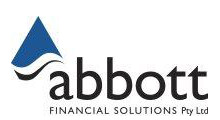The pros and cons of investing in the Australian residential property market and your options for building an investment portfolio using property.
Unlike buying a home to live in, an investment property is usually bought with the goal of making money. Investing in property is a popular way to invest money in Australia, but before starting, think about whether it fits with your circumstances.

Pros and cons of property investment
Here are some things to consider when it comes to investing in property.
|
Benefits |
Considerations |
|
It’s tangible Property is a tangible investment and it can be less volatile than other investments. Banks tend to be well-versed in property and often have a standard lending process to step you through. |
The cost of buying and selling a property On top of the price of the property itself, consider additional costs when investing in property, including stamp duty, legal fees, building and pest inspections, and loan set-up costs. Get a clear idea of how much you will need for the entire purchase process, and when. There are also costs when you decide to sell, including capital gains tax and real estate agent fees. |
|
Tax benefits Many of the costs involved with owning an investment property may be tax deductible. Property investors can also potentially use the losses arising from negative gearing (where the income from the investment is less than the expenses) as a tax deduction against their other income. |
Tax implications A key difference between an investment property and a home to live in is that paying capital gains tax is generally required for investment properties when they are sold. For negative gearing, if the investment property makes an income loss, you are solely relying on capital growth to provide you with any investment return. It’s important to make sure you have sufficient cash flow overall to fund this strategy, including the possible increase in the loan repayments if the interest rates rise. |
|
Potential for long-term returns Property can deliver long-term returns if the value of the property increases over time, plus there’s also potential to receive rental income before the eventual sale. Positive gearing can be a long-term goal. Where the property income is greater than property expenses, it could provide the investor with a tidy side income.
|
There are no guarantees When looking to buy for investment, you should research:
|
|
Access to equity in your property Equity refers to the current market value of your property, minus the amount you owe on the property. You could use this equity to secure a loan for another investment. Organise a property valuation to understand your property’s equity value. |
Equity isn’t a guarantee The market value of your property can go up or down, so the equity you have in the property can also rise and fall. Having equity in a property doesn’t mean you can automatically borrow against it as it depends on the lender’s loan criteria. Borrowing against this equity will increase your debt levels and means you’re using your property as security. Consider the long-term impact of taking on added debt and what happens if the investment doesn’t provide the results you were hoping for. |
|
More decisions within your control You manage the important decisions for your investment property, including ways to increase its value, such as renovating and paying down your home loan more quickly. This can help increase your equity in the property. |
Invest wisely If you decide to make some physical changes to your property to increase its value, make sure you’re aware of how the changes will impact the value of your property and whether it’s worthwhile. |
Tips for buying an investment property
Be clear on your goals
Consider the realities of the property investment alongside its potential benefits. Make sure you can cover your loan repayments without greatly affecting your lifestyle, and whether you’re comfortable with the risks involved, such as a possible drop in market value or significant interest rate rises.
Do your research
If you’re looking for an apartment or a house, or a particular suburb, research how much you can afford to borrow with an investment loan.
Decide whether you’re buying to generate an income now, or as a longer-term investment. Then research the property’s potential for capital growth, rental income and ongoing costs.
Set a budget within your means
Lenders typically ask for a minimum deposit of between 10% and 20%. You’ll also need enough upfront cash for things such as stamp duty, legal and conveyancing fees, insurances, maintenance, and interest on borrowings.
Consider how the cost of your borrowings could impact your investment, and also look at your interest rate loan options and how they might fluctuate. You could also consider taking a ‘fixed rate’ loan for at least part of your borrowing, this will ‘lock in’ part of the interest expense for a period of time.
Check your credit history
Make sure the details in the credit history report are correct, ideally before you start inspecting properties. Visit moneysmart.gov.au for information.
Decide who’ll manage the property
If you’re time poor or live far from your investment property, consider appointing a property manager or real estate agent. Keep in mind that this will incur property management fees.
Consider whether you need insurance
Acts of nature, building repairs, contents and loss of rental income are some of the things to think about. The type of cover and the premiums you’ll pay can vary greatly depending on the provider and the policy you take out.
Budgeting smaller costs
Consider ongoing property costs such as:
-
council rates
-
water rates
-
strata fees
-
repairs and maintenance
-
property management fees
-
estimated vacancy costs, including lost rent and advertising
-
insurance, such as landlords’ insurance
-
other charges, such as land tax.
You may also want to budget for renovations on your property too.
Alternative ways to invest in property
Consider opportunities that allow you to purchase a portion of a property alongside other investments – such as investing in property through the Australian Stock Exchange (ASX).
Some benefits of investing this way include greater liquidity, diversification across different assets and lower transaction costs. But be aware that share prices rise and fall daily, unlike bricks and mortar which can be less volatile.
Some examples include real estate investment trusts (REITs), investing in home construction and using equity from your self-managed super fund.
Contact us if you’d like to talk about your investment strategy. Call us on 07 3245 3438.
Source: AMP November 2021
Important:
This information is provided by AMP Life Limited. It is general information only and hasn’t taken your circumstances into account. It’s important to consider your particular circumstances and the relevant Product Disclosure Statement or Terms and Conditions, available by calling 07 3245 3438, before deciding what’s right for you.
All information in this article is subject to change without notice. Although the information is from sources considered reliable, AMP and our company do not guarantee that it is accurate or complete. You should not rely upon it and should seek professional advice before making any financial decision. Except where liability under any statute cannot be excluded, AMP and our company do not accept any liability for any resulting loss or damage of the reader or any other person. Any links have been provided for information purposes only and will take you to external websites. Note: Our company does not endorse and is not responsible for the accuracy of the contents/information contained within the linked site(s) accessible from this page.


